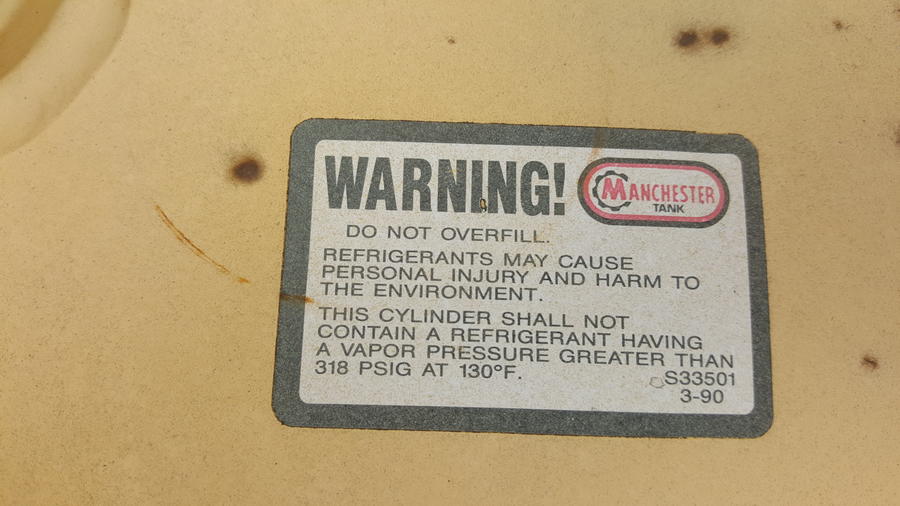Hi inkjunkie, i am a HVAC engineer.
This is a description of Mustard Gas, Phosgene.
Phosgene may also be produced during testing for leaks of older-style refrigerant gases. Chloromethanes (R12, R22 and others) were formerly leak-tested in situ by employing a small gas torch (propane, butane or propylene gas) with a sniffer tube and a copper reaction plate in the flame nozzle of the torch. If any refrigerant gas was leaking from a pipe or joint, the gas would be sucked into the flame via the sniffer tube and would cause a colour change of the gas flame to a bright greenish blue. In the process, phosgene gas would be created due to the thermal reaction. No valid statistics are available, but anecdotal reports suggest that numerous refrigeration technicians suffered the effects of phosgene poisoning due to their ignorance of the toxicity of phosgene, produced during such leak testing.[citation needed] Electronic sensing of refrigerant gases phased out the use of flame testing for leaks in the 1980s. Similarly, phosgene poisoning is a consideration for people fighting fires that are occurring in the vicinity of freon refrigeration equipment, smoking in the vicinity of a freon leak, or fighting fires using halon or halotron.[citation needed]
It is only the older type refrigerants R12, R22, R502 Chloromethanes that will cause this. Not sure if you still use these in the US. What refrigerant was in the cylinder?
I have cut refrigerant cylinders with a grinder with no problems. But as a caution, I would fill it with water and some detergent like you would do with a Propane cylinder, and cut in the same manner.





